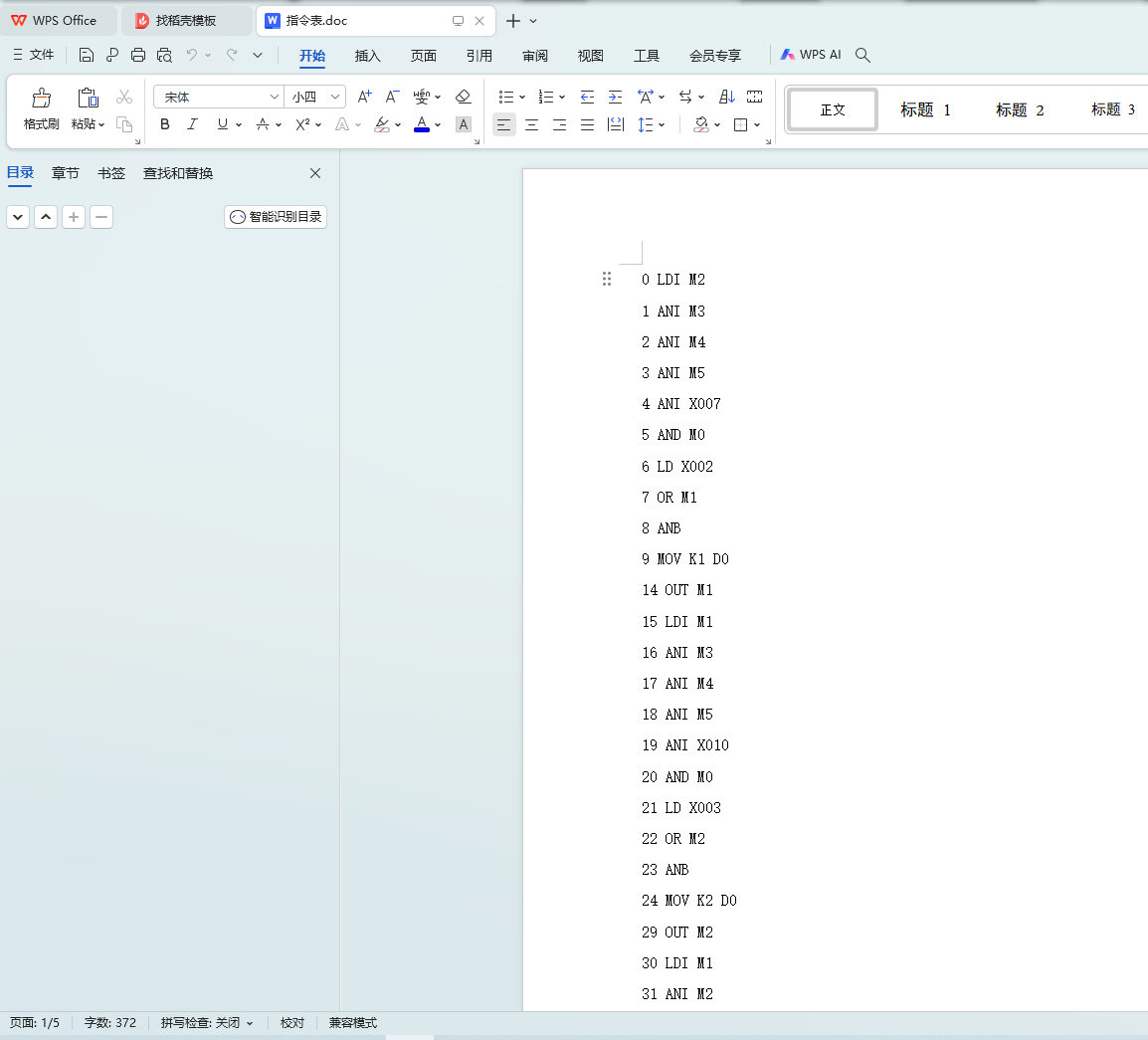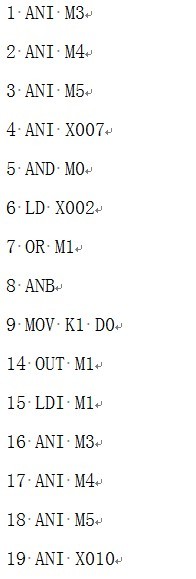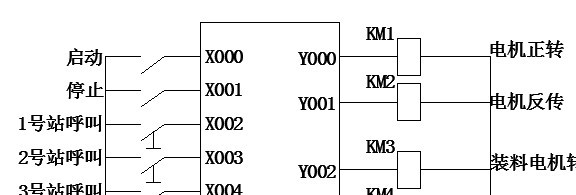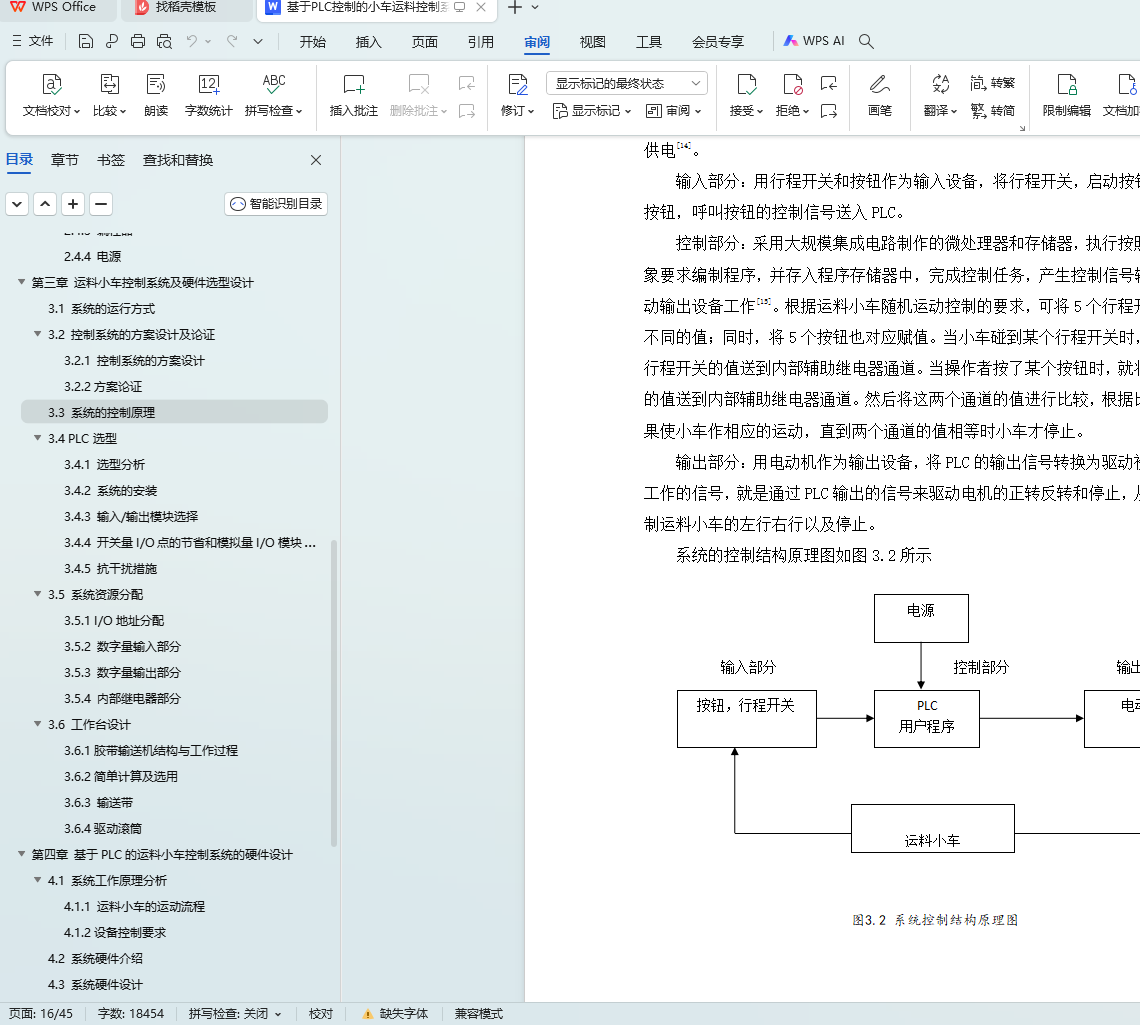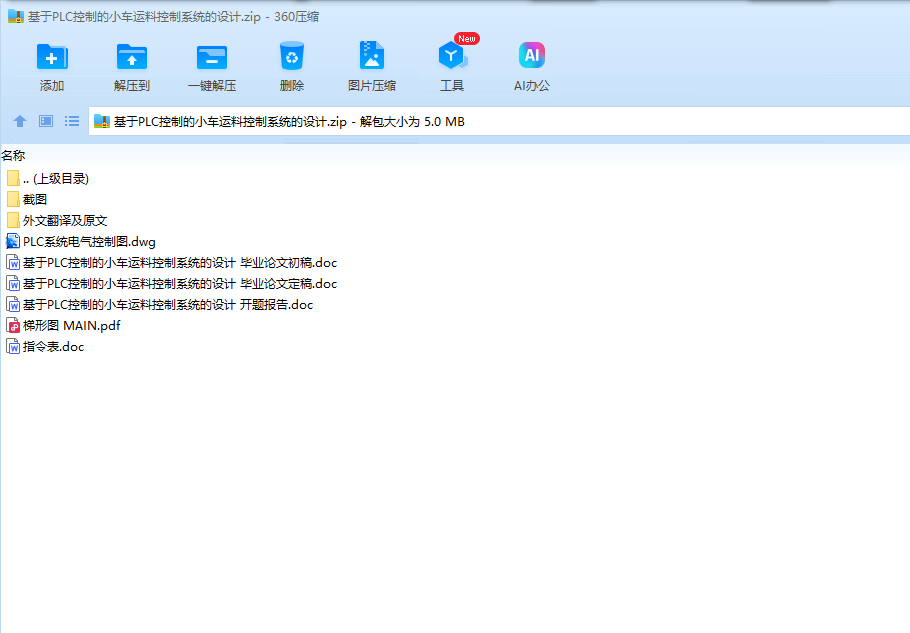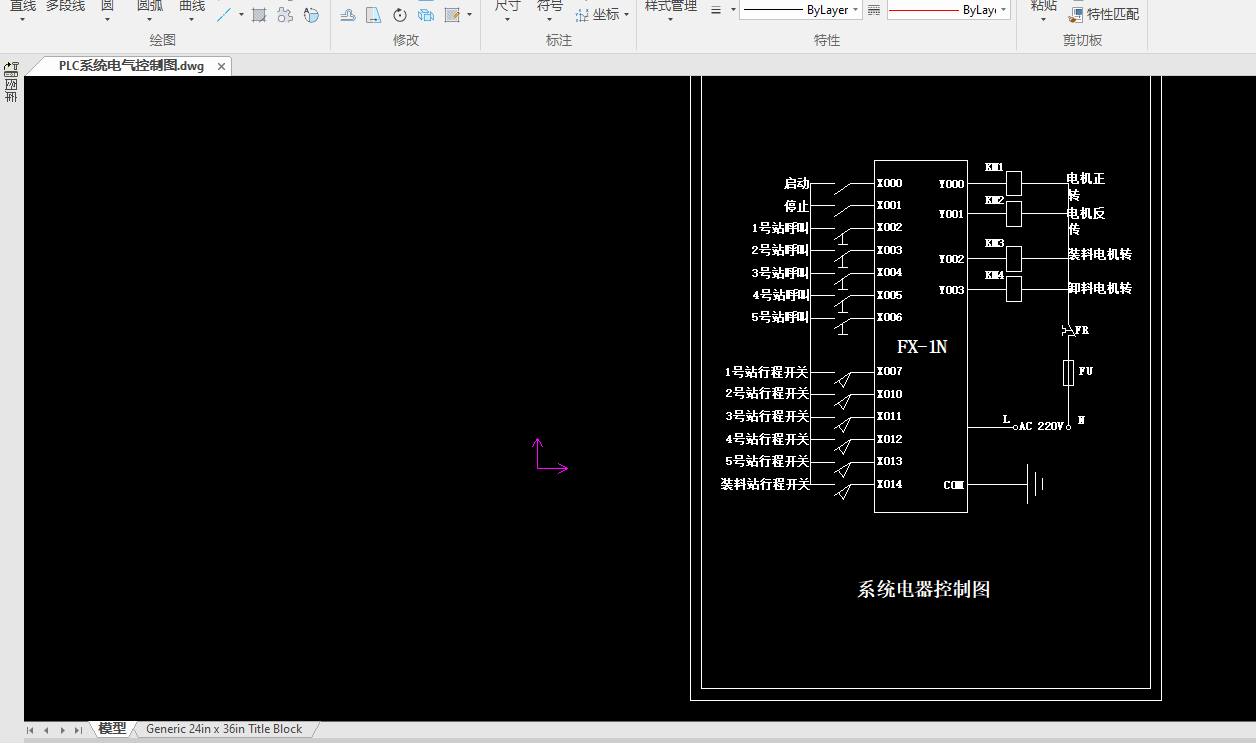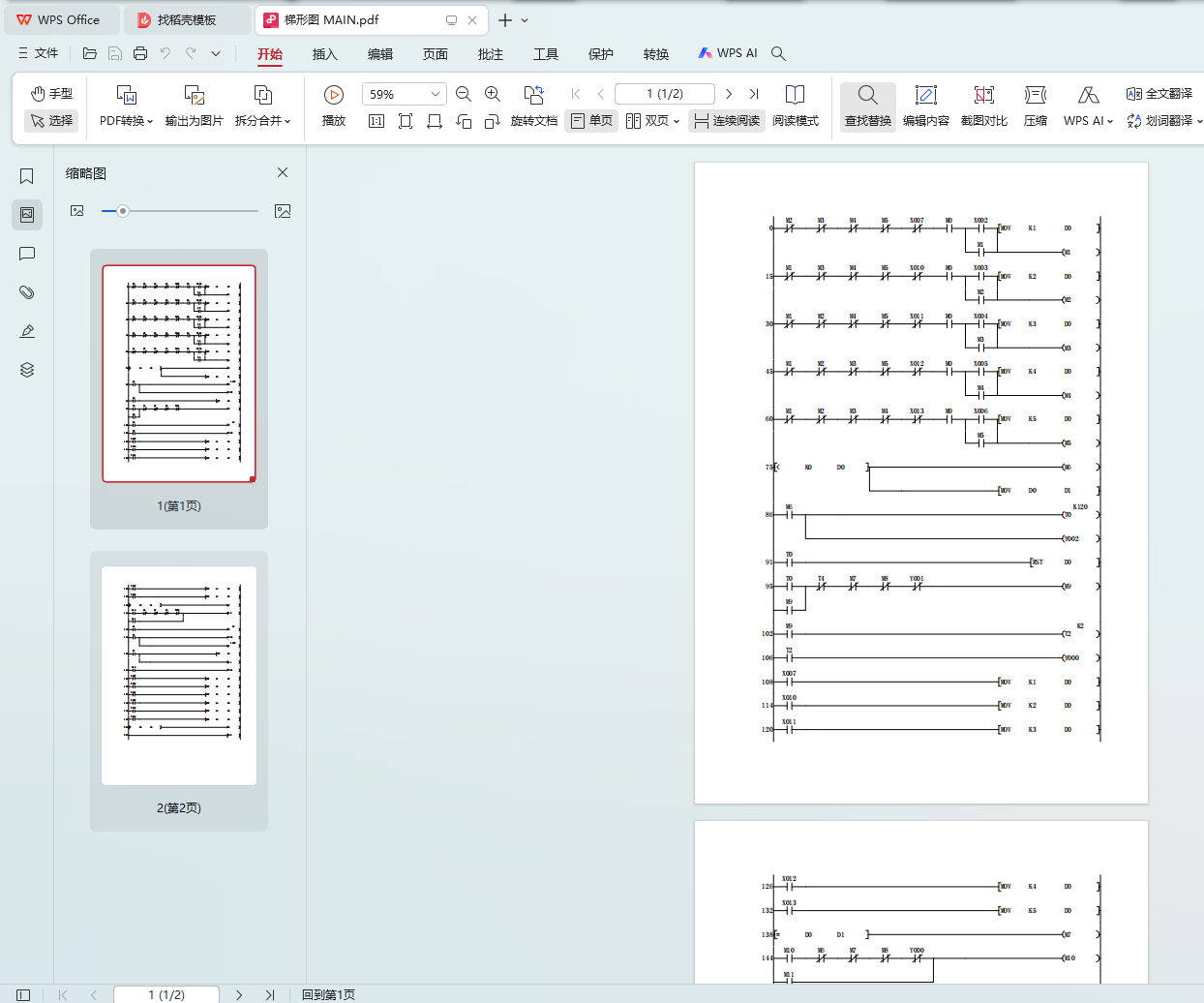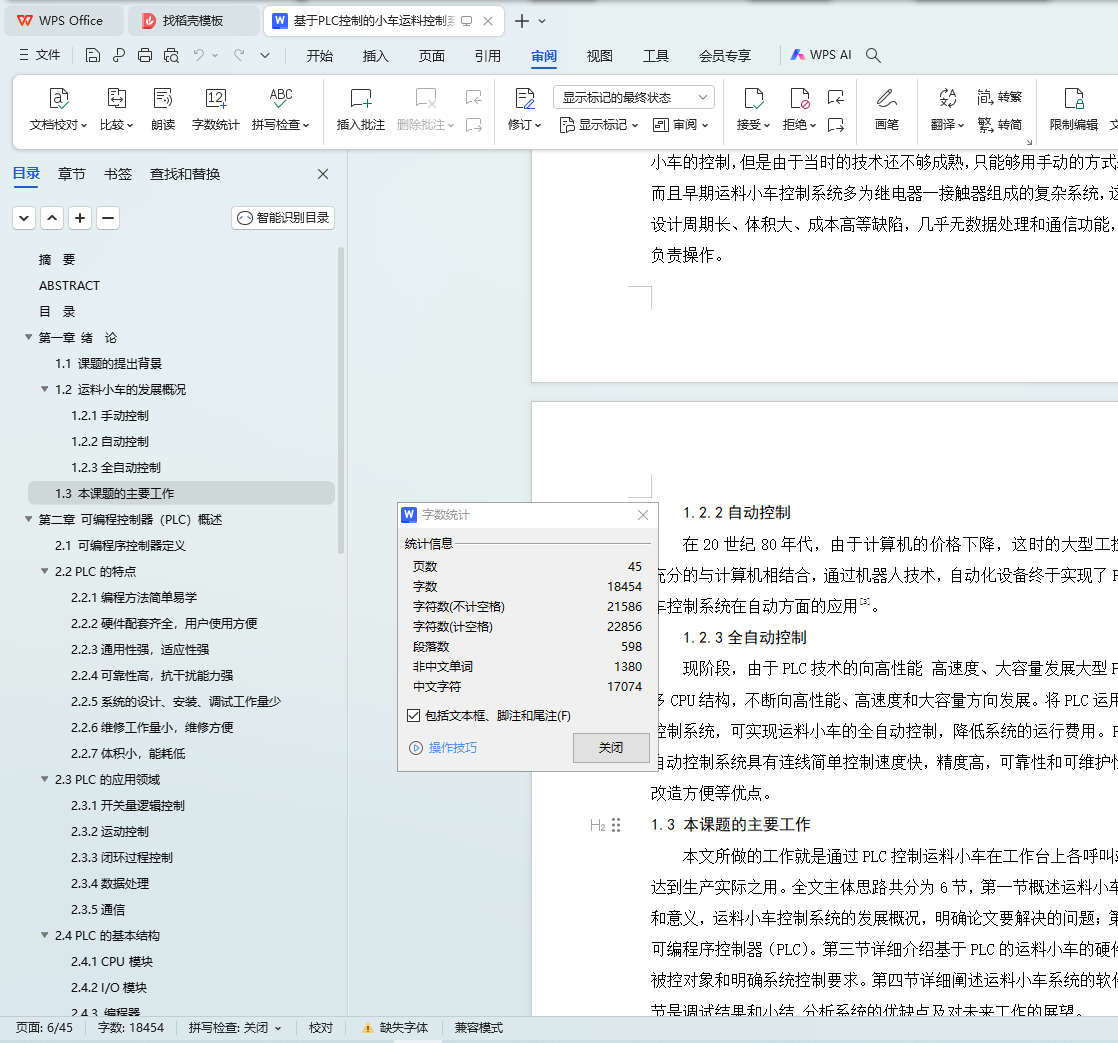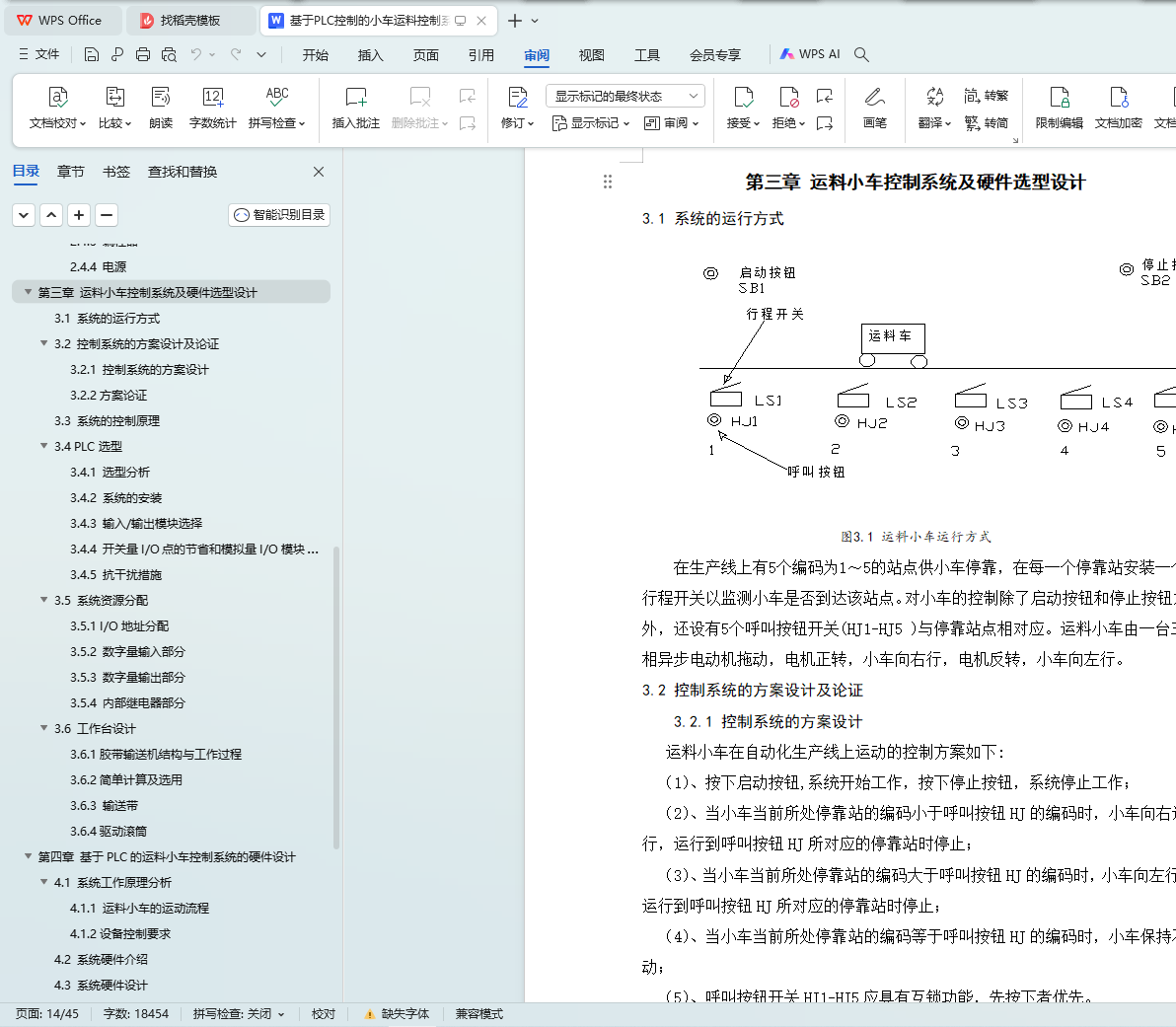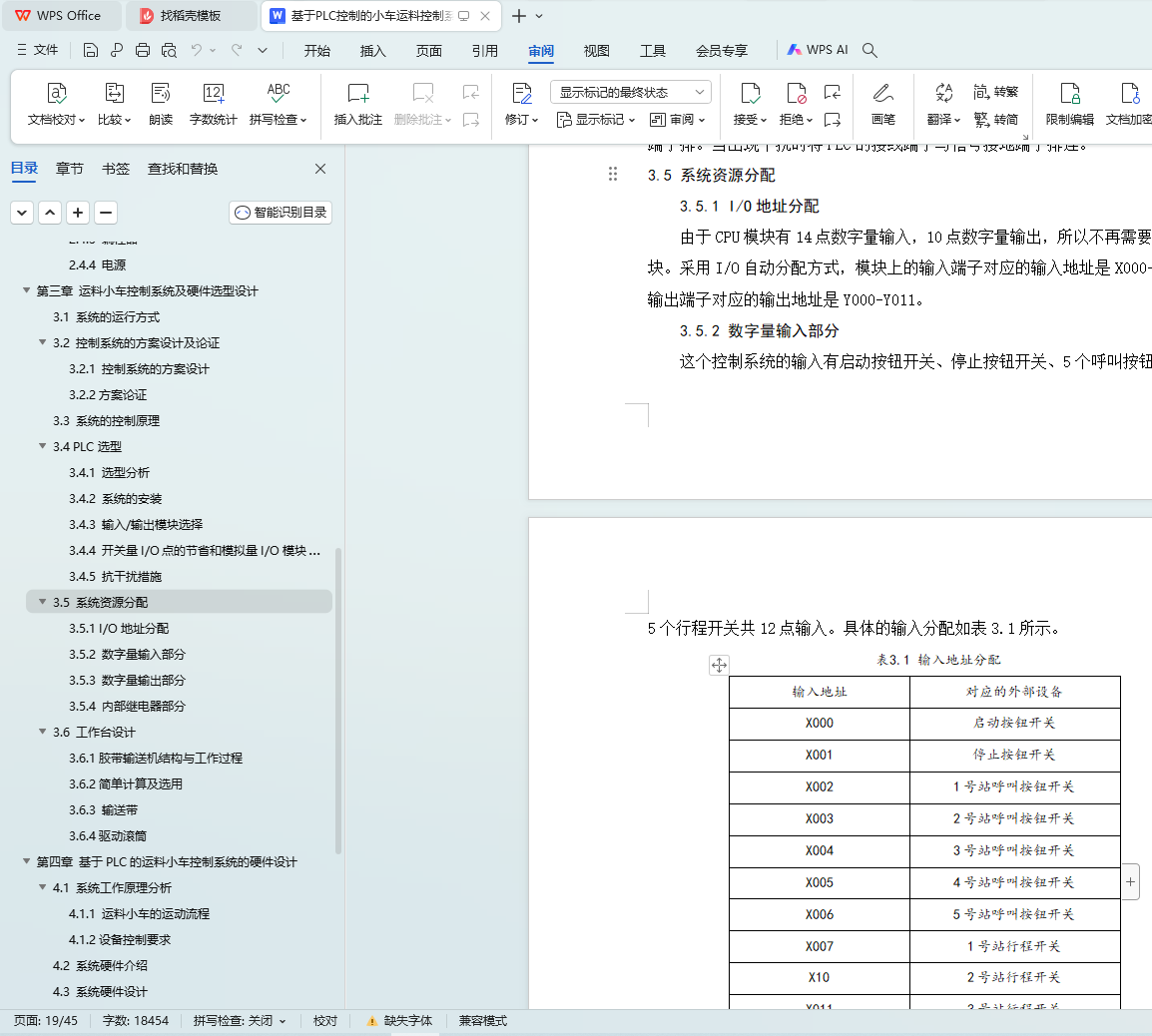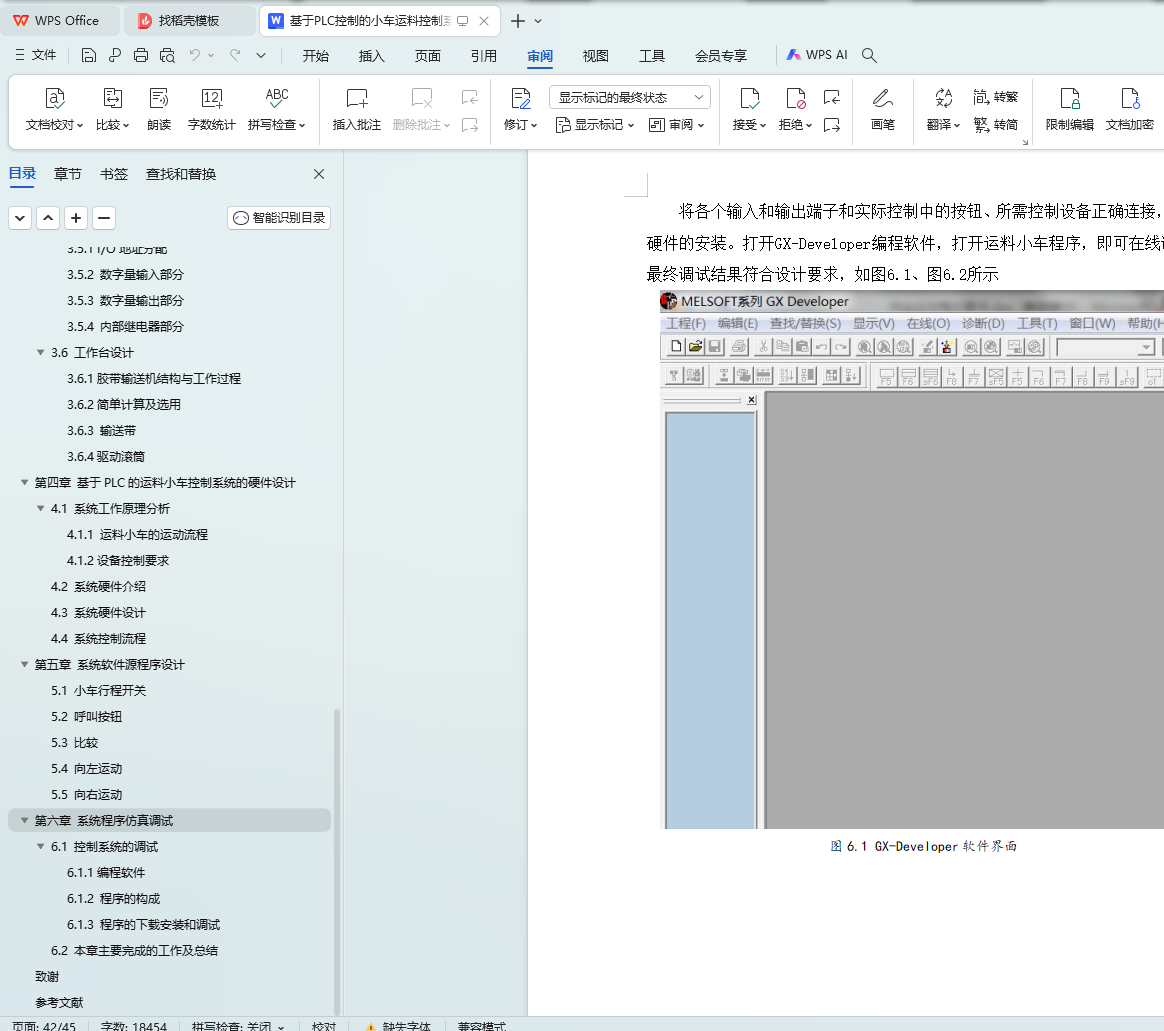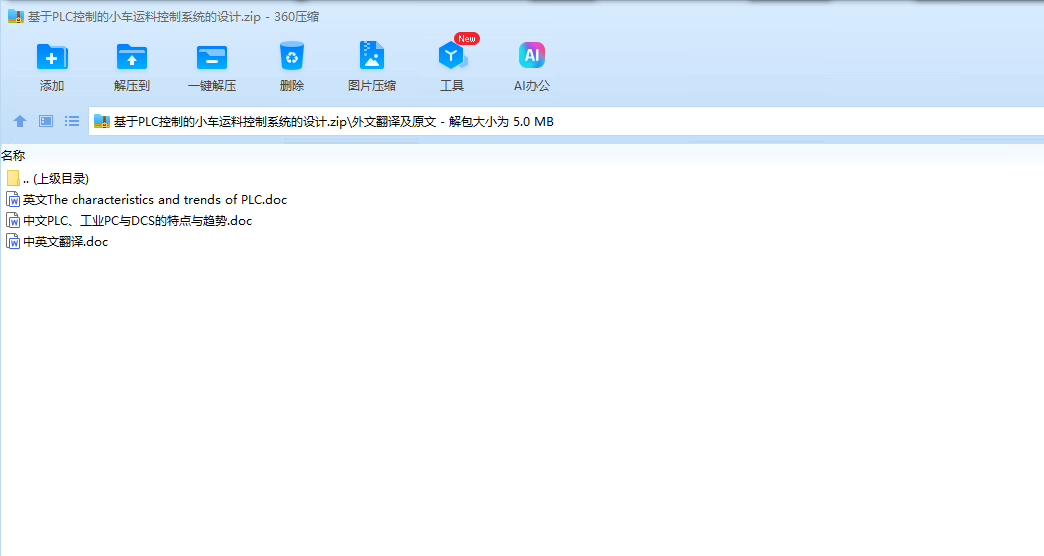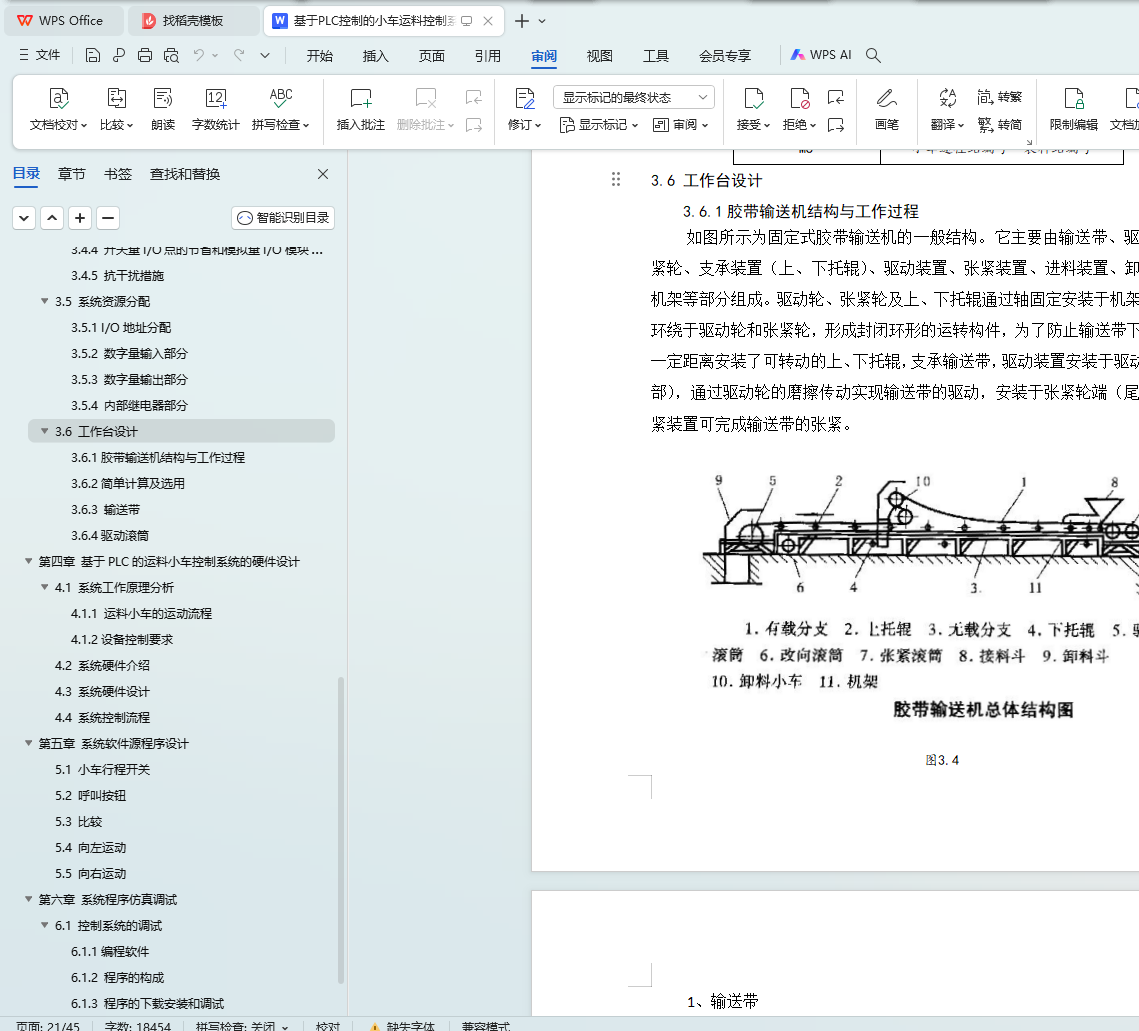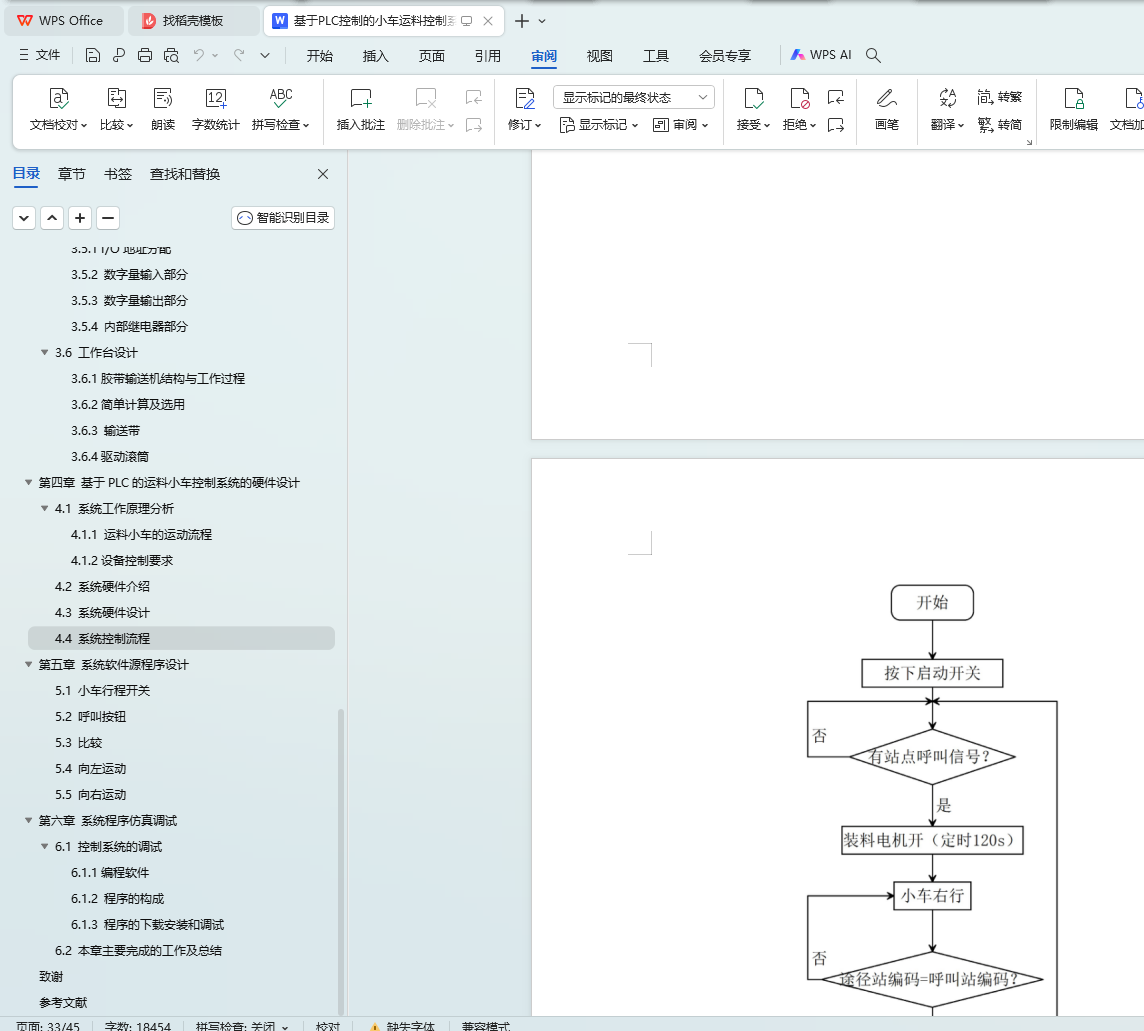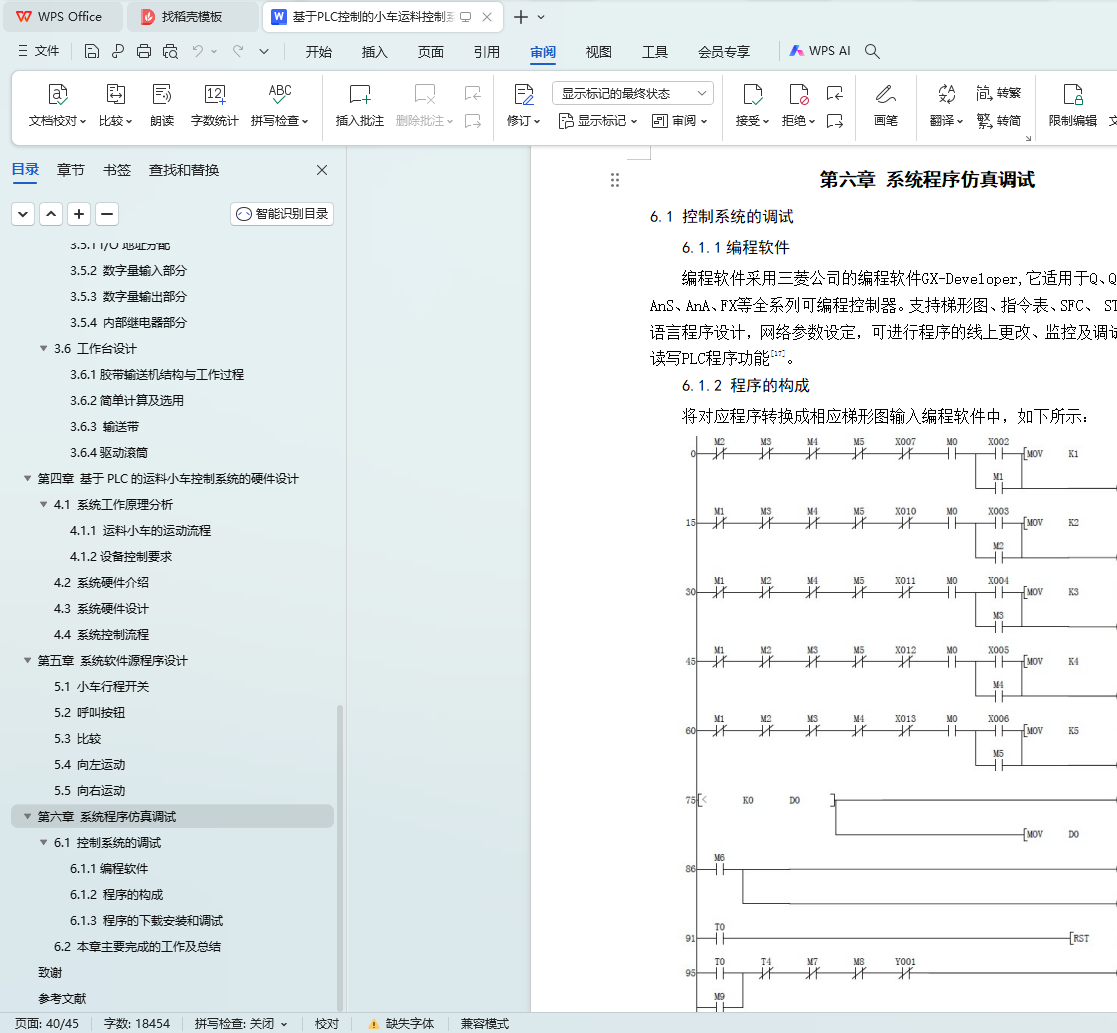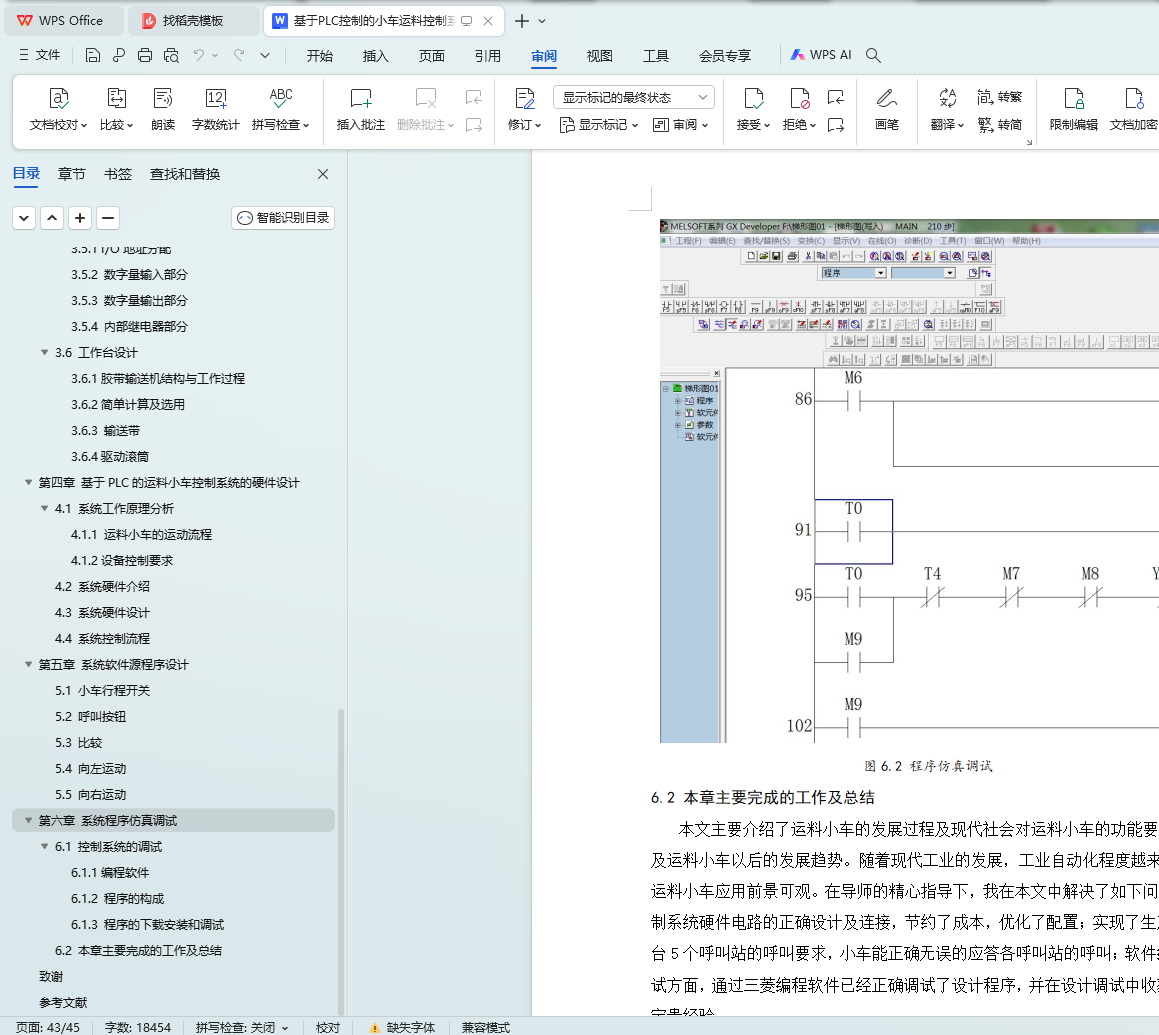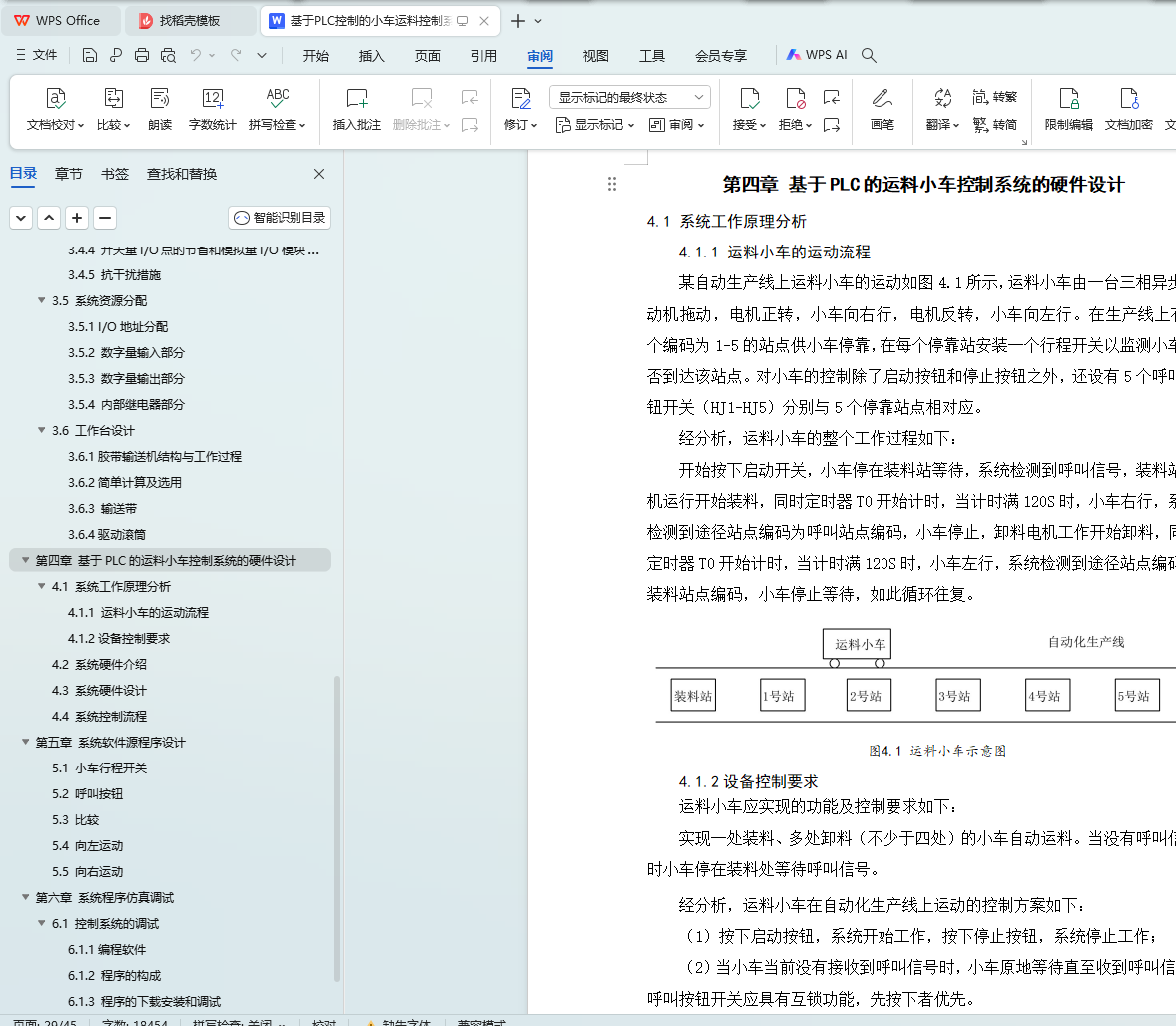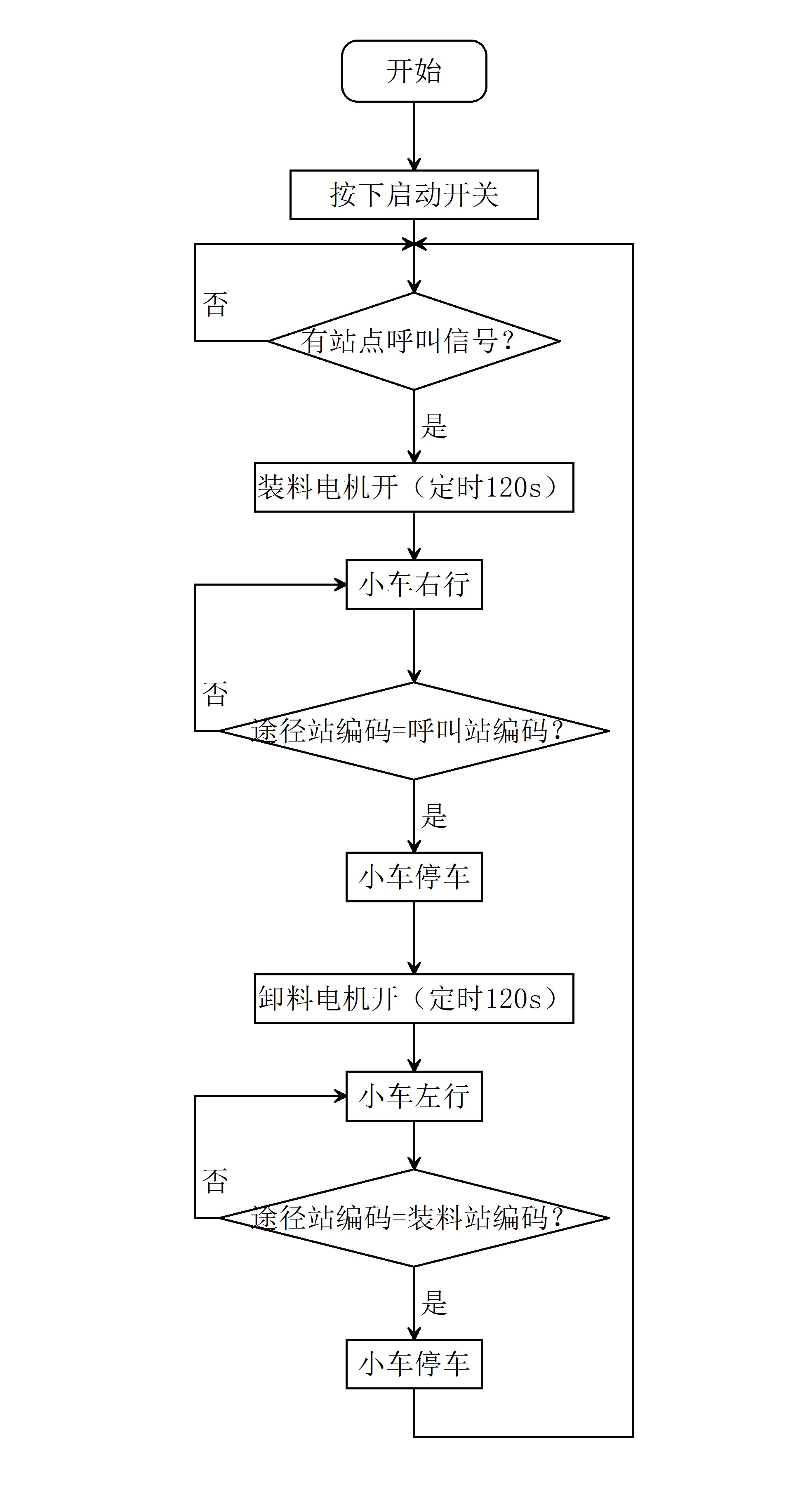摘 要
近年来,随着科学技术的进步和微电子技术的迅速发展,可编程序控制技术已广泛应用于自动化控制领域,可编程序控制器(PLC)以其高可靠性和操作简便等特点,已经形成了一种工业趋势。
可编程控制器是一种新型的通用控制装置,它将传统的继电器-接触器控制技术、计算机技术和通讯技术融为一体,专门为工业控制而设计,这一新型的通用自动控制装置以其高可靠性、较强的工作环境适应性和极为方便的使用性能,深受自动化领域技术人员的普遍欢迎。
本文设计了一种由PLC控制的运料小车,该小车能在装料站完成装料过程,然后根据5个卸料站点的呼叫信号运行到相应呼叫站点进行卸料,卸料完成之后返回装料站等待下一个呼叫信号。本文对小车的控制系统经行了详细设计,其中包括硬件系统和软件系统,并结合三菱PLC编程软件GX Developer ,对系统程序经行了仿真分析。
关键词:PLC,运料小车,控制系统
ABSTRACT
In recent years, with the scientific and technological progress and rapid development of microelectronic technology, programmable control technology has been widely used in automation and control, programmable logic controller (PLC) for its high reliability and simple operation, has been formation of an industry trend.
Programmable controller is a new type of universal control devices, it will traditional relay - contactor control technology, computer technology and communication technology integration, designed specifically for industrial control, this new automatic control device to the general its high reliability, strong work environment is very easy adaptability and performance, by the automation of technical staff in general.
In this paper, a PLC control car transporter, the car in the loading station to complete the loading process, and then run according to the five discharge site call signal to the corresponding call site discharge, after the completion of the discharge Returning Assemblies feed station waits for the next call signal. The detailed design of the control system of the car line, including hardware and software systems, combined with Mitsubishi PLC programming software GX Developer, the system program line simulation analysis.
Keywords: PLC,transporter cart,control system
目 录
摘 要
ABSTRACT
目 录
第一章 绪 论
1.1 课题的提出背景
1.2 运料小车的发展概况
1.2.1手动控制
1.2.2自动控制
1.2.3全自动控制
1.3 本课题的主要工作
第二章 可编程控制器(PLC)概述
2.1 可编程序控制器定义
2.2 PLC的特点
2.2.1编程方法简单易学
2.2.2硬件配套齐全,用户使用方便
2.2.3通用性强,适应性强
2.2.4可靠性高,抗干扰能力强
2.2.5系统的设计、安装、调试工作量少
2.2.6维修工作量小,维修方便
2.2.7体积小,能耗低
2.3 PLC的应用领域
2.3.1开关量逻辑控制
2.3.2运动控制
2.3.3闭环过程控制
2.3.4数据处理
2.3.5通信
2.4 PLC的基本结构
2.4.1 CPU模块
2.4.2 I/O模块
2.4.3 编程器
2.4.4 电源
第三章 运料小车控制系统及硬件选型设计
3.1 系统的运行方式
3.2 控制系统的方案设计及论证
3.2.1 控制系统的方案设计
3.2.2方案论证
3.3 系统的控制原理
3.4 PLC选型
3.4.1 选型分析
3.4.2 系统的安装
3.4.3 输入/输出模块选择
3.4.4 开关量I/O点的节省和模拟量I/O模块的代用
3.4.5 抗干扰措施
3.5 系统资源分配
3.5.1 I/O地址分配
3.5.2 数字量输入部分
3.5.3 数字量输出部分
3.5.4 内部继电器部分
3.6 工作台设计
3.6.1胶带输送机结构与工作过程
3.6.2简单计算及选用
3.6.3 输送带
3.6.4驱动滚筒
第四章 基于PLC的运料小车控制系统的硬件设计
4.1 系统工作原理分析
4.1.1 运料小车的运动流程
4.1.2设备控制要求
4.2 系统硬件介绍
4.3 系统硬件设计
4.4 系统控制流程
第五章 系统软件源程序设计
5.1 小车行程开关
5.2 呼叫按钮
5.3 比较
5.4 向左运动
5.5 向右运动
第六章 系统程序仿真调试
6.1 控制系统的调试
6.1.1编程软件
6.1.2 程序的构成
6.1.3 程序的下载安装和调试
6.2 本章主要完成的工作及总结
致谢
参考文献
